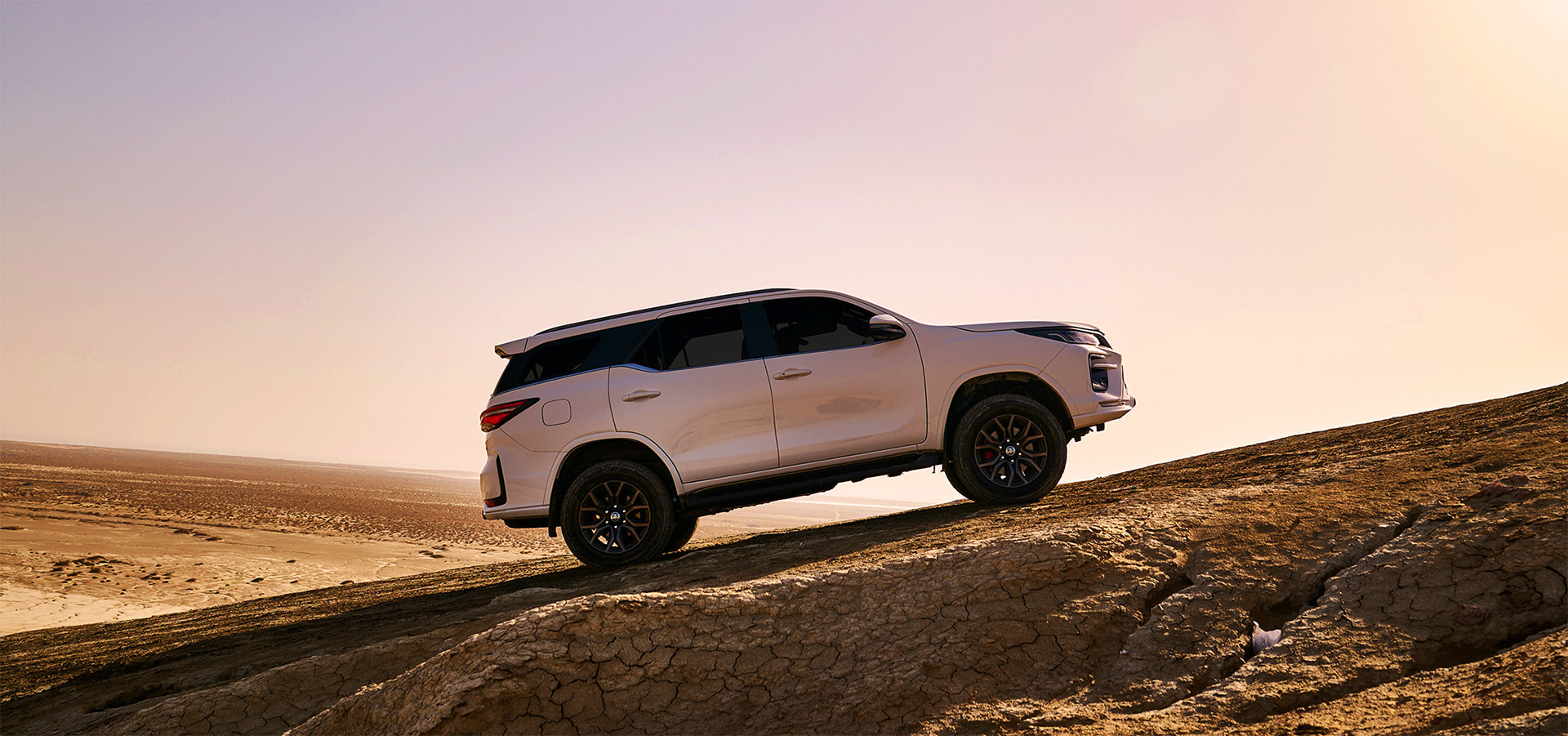It’s no secret that roads are deteriorating rapidly. With a large hole here and another one there, potholes seem to be appearing everywhere.
Now more than ever, urban drivers need vehicles that can handle rough road conditions with ease.
That’s why cars designed to tackle potholes like a pro are in high demand. Here are our top five recommended vehicles that practically laugh in the face of an approaching pothole.
Potholes are the bane of every driver’s existence — jarring, destructive, and seemingly unavoidable. But what if your car could glide over them like they weren’t even there? Welcome to the future of ride comfort: suspensions that don’t just absorb potholes, they devour them.
Suspensions That Eat Potholes
From adaptive dampers to predictive AI-assisted systems, automotive suspension tech is undergoing a revolution. In this article, we dive into the innovations turning rough roads into smooth rides — and what this means for the cars of tomorrow.
ISUZU D-Max
You won’t just feel like you own the urban streets you’ll also take command of dirt roads, off-road trails, muddy paths, and more.
Potholes are mere child’s play for the ISUZU D-Max Diesel Double Cab. As a 4×4, its sturdy suspension is engineered to absorb bumps and impacts so effectively that you hardly feel a thing.
The tyres come with notably thick sidewalls, which means rim damage isn’t something you need to worry about.
On top of that, its ground clearance is exceptional, allowing the underbody to glide effortlessly over potholes even when driving directly into them. The ISUZU D-Max dares potholes to challenge it.
Selling pick-up trucks used to be a straightforward affair. A solid payload, a dependable diesel engine, and decent reliability were enough to get a truck onto farmyards and construction sites across the country. But things have evolved—and so has the Isuzu D-Max.
Today, toughness alone isn’t sufficient. Pick-ups are expected to be versatile—capable workhorses during the week and practical, comfortable family haulers on the weekend. They need to compete with SUVs in terms of safety, comfort, and usability while retaining their rugged credentials.
To meet this demand, the Isuzu D-Max comes in multiple configurations: a single cab with a long bed, an extended cab, or a full five-seater double cab that offers weekday utility and weekend versatility.
There’s even a hardcore off-road version called the Arctic Trucks AT35. But do these options give the D-Max enough to challenge top competitors like the Ford Ranger, VW Amarok, KGM Musso, and Toyota Hilux? Let’s find out.
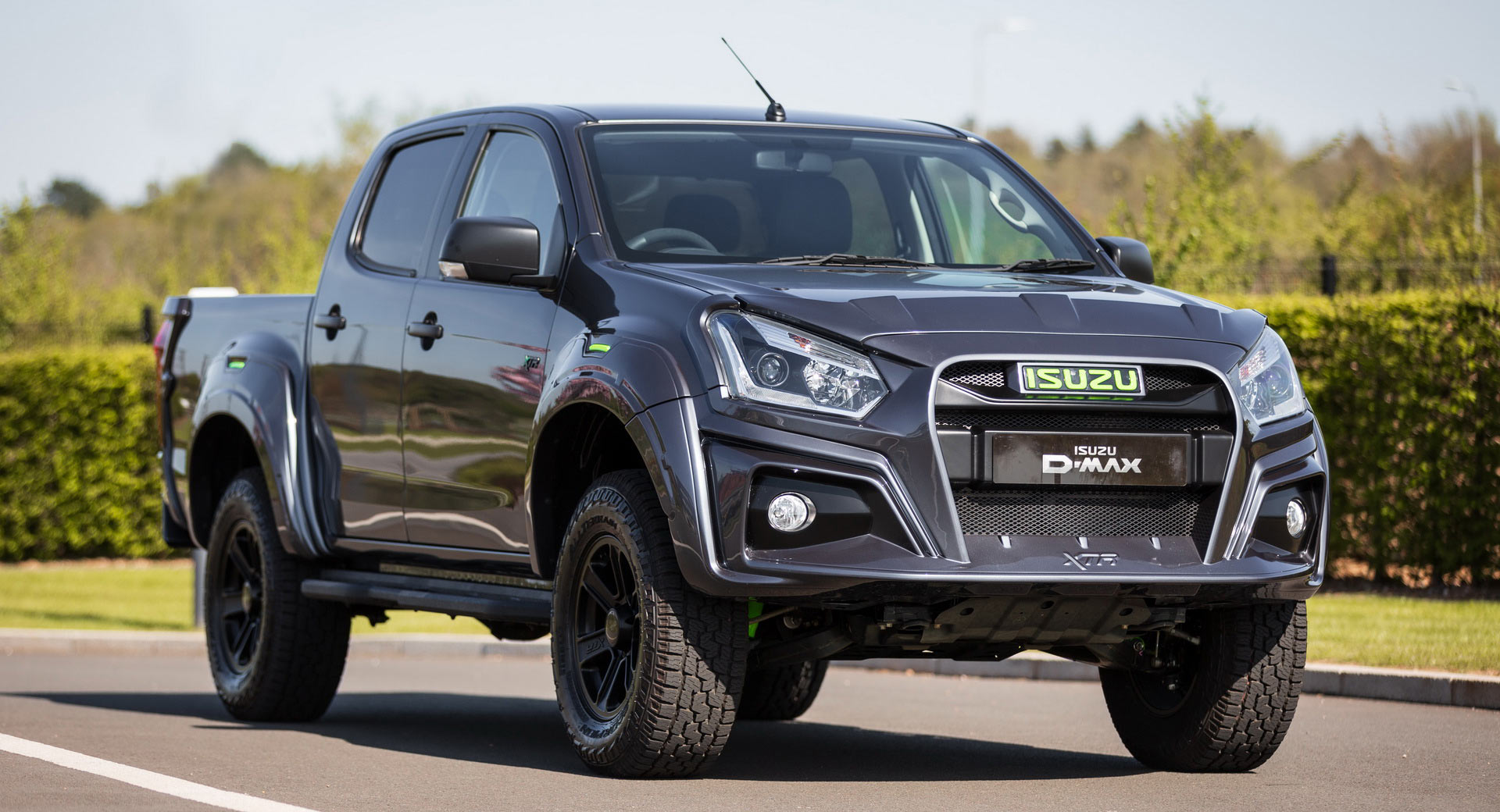
The 2025 Isuzu D-Max impresses with its generous warranty but lags behind its key rivals when it comes to performance, ride quality, and handling. The Ford Ranger is superior in all three areas and also boasts a more upscale interior.
The D-Max offers a simple and logically arranged interior, strong payload ratings, and a commendable array of safety technologies across all trims. However, its diesel engine is underpowered and noisy, the ride is on the firm side, and competitors offer more premium interior finishes.
Driving the D-Max is straightforward, but its 161bhp 1.9-litre diesel engine—the only current engine choice—limits its appeal. Isuzu plans to launch its first all-electric D-Max later in 2025, which may address this shortcoming.
For now, the diesel gets the truck moving adequately in everyday scenarios but starts to lose steam at higher speeds. It performs similarly to the entry-level Toyota Hilux but can’t match the punchier variants or anything in the Ford Ranger lineup.
The D-Max Utility trim is only available with a six-speed manual transmission. Other trims can be had with either the manual or a six-speed automatic. The manual’s clutch has a satisfying weight to it, though the first gear feels unusually short.
The automatic transmission shifts smoothly once you’re up and running, but it can be hesitant when it needs to kick down. All D-Max variants stay under the 2,040kg weight threshold that would require slower speed limits in the UK, so you can legally drive them at the same speed limits as regular cars.
The D-Max rides much better than older pick-ups and is a significant improvement over its predecessor, but it still tends to bounce around when unladen and sends noticeable jolts through the body when hitting sharp bumps. That’s not to say it’s uncomfortable, but the Toyota Hilux handles itself more tightly, and the Ford Ranger is more compliant and composed.
The D-Max also doesn’t handle corners as confidently. Its light steering is better suited to off-road conditions than twisty roads, where the Ranger’s more precise steering shines by providing better control and less disruption from mid-corner bumps.
As is often the case with pick-ups, engine refinement is not a D-Max strength. Demanding more speed brings a fair bit of noise, and though it settles at cruising speeds, wind noise around the large mirrors and general road noise persist.
That said, the D-Max contains suspension noise well, and it excels in off-road environments. Thanks to ample suspension articulation and a lockable rear differential (standard on DL20 trims and up), the D-Max handles rugged terrain with ease.
Isuzu has also added a new Rough Terrain mode, a smarter and more aggressive traction control system that significantly enhances capability on steep, muddy inclines. The D-Max can also wade through water up to 800mm deep.
Inside, the D-Max features a well-organized cabin with a good driving position. All versions include driver lumbar support—manual in single and extended cabs, electric in double cabs.
Some drivers might wish the steering wheel offered more reach adjustment, but forward visibility is excellent due to the elevated seating position, slim side pillars, and large mirrors. A reversing camera comes standard across the range, with the DL20 adding rear parking sensors and the DL40 including front sensors as well.
All D-Max models, except for the V-Cross and Arctic Trucks AT35, now come with a new 8-inch infotainment touchscreen. Those two higher trims get an updated version of the previous 9-inch system.
The 8-inch screen is a marked improvement over the old base system, with clear graphics and quick responses. It may not quite match the systems in the Ranger or Amarok, but it’s perfectly usable.
Standard features include DAB radio and Bluetooth, though built-in sat-nav is absent. Thankfully, wireless Android Auto and Apple CarPlay are included, so you can use your favorite navigation app through the touchscreen.
Physical buttons below the screen make adjusting stereo and key functions easy, and a dedicated climate control panel is more user-friendly than the touchscreen-based setups in some rivals.
While there are some soft-touch materials on the dashboard and painted trim inserts on higher-end models, the overall feel remains utilitarian—which matches the D-Max’s work-ready personality.
The controls feel robust enough to handle muddy boots and tough use. Still, if you’re after a more refined and premium-feeling interior, the Ford Ranger Wildtrak or VW Amarok offer a broader palette of materials and an elevated cabin experience.
Also Read: 5 Cars Thieves Can’t Crack and 5 That Get Stolen With a Laptop
Ford Ranger Tremor
Boujee and badass, the Ford Ranger Tremor makes potholes its pet. The Tremor’s suspension is engineered for serious off-road performance, making it perfectly suited for rough urban streets.
Equipped with Bilstein Dampers, this vehicle turns what should be a bumpy ride into a surprisingly smooth experience.
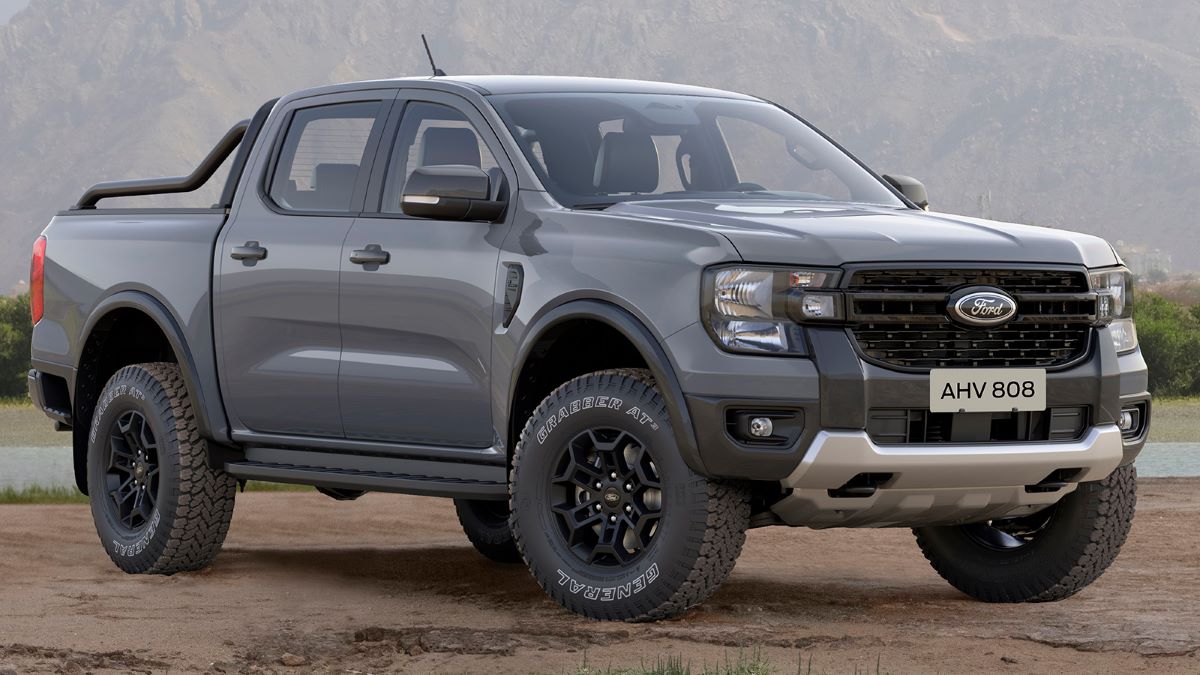
It also comes with larger, all-terrain tyres that offer enhanced cushioning when it heads straight for potholes.
And if you choose to upgrade your Tremor to the Platinum version, your Ford Ranger gains extra underbody protection, including a fuel tank guard for those times when potholes start looking more like manholes.
Toyota Fortuner
Japanese-engineering excellence shines through the Toyota Fortuner. This impressive vehicle handles potholes like a pro, along with a wide range of rough-road conditions.
Its body-on-frame construction offers a strong, durable foundation that absorbs pothole impacts with ease.
In addition, its double-wishbone front suspension and four-link rear suspension systems enable it to tackle potholes with expert precision.
While the standard tyre setup leans more toward urban driving, newer models come equipped with Continental Cross Contact ATR tyres, which giggle in the face of potholes.
The future has arrived with the all-new Toyota Fortuner 2025, not just aiming to lead but to completely reshape the full-size SUV segment. It combines formidable performance, a commanding design, and premium features that elevate expectations.
Known for its reliability and dominance in the SUV space, the next-generation Fortuner upholds this legacy while meeting the demands of Indian buyers who want a vehicle that’s tough, spacious, and luxurious.
The 2025 Fortuner presents a bold, modern look that exudes aggression and confidence. Key updates include a more open, chrome-accented front grille, newly styled LED headlamps with daytime running lights (DRLs), revised bumpers, and new fog lamp housings. It also features upgraded alloy wheels ranging from 18 to 20 inches, redesigned LED taillights, and a refreshed rear bumper.
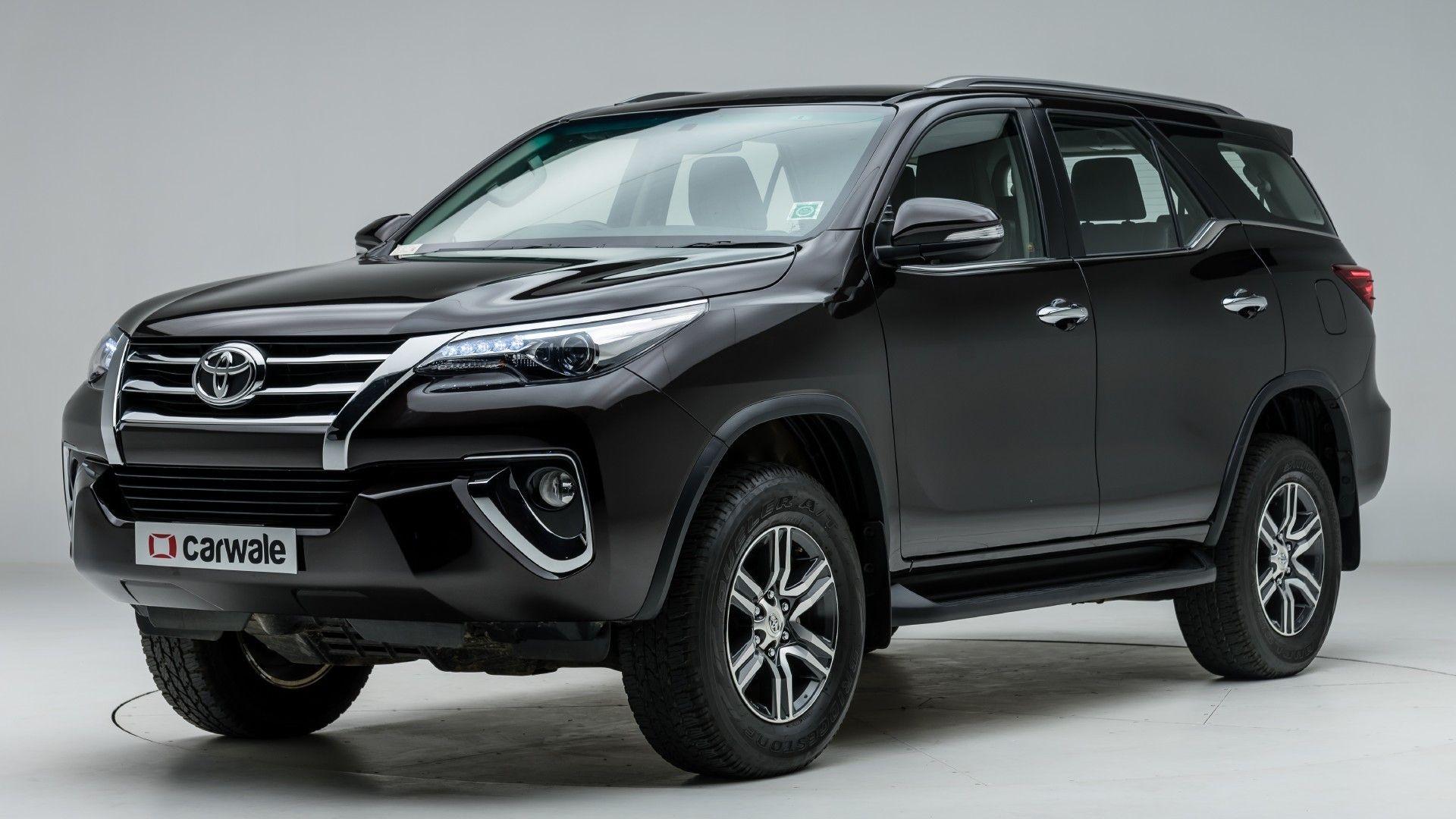
Buyers can choose between chrome or blacked-out exterior accents, allowing for more personalized styling. With its tall ground clearance, tough body cladding, and functional roof rails, the Fortuner is ready for both urban streets and off-road trails.
Inside, the Fortuner 2025 boasts a more upscale and functional cabin, reinforcing its seven-seater configuration with ample room across all three rows.
The layout is thoughtfully designed for comfort and premium appeal. Highlights of the cabin include a dual-tone, soft-touch dashboard that enhances the visual appeal and tactile quality. The centerpiece is a new 10-inch touchscreen infotainment system that supports wireless Apple CarPlay and Android Auto, offering seamless smartphone integration.
A customizable digital display gives drivers the option to switch between Sport and Touring modes, tailoring the interface to their driving style.
On top trims, an 11-speaker JBL audio system ensures rich and immersive sound. Added convenience features include an optional wireless charger and multiple USB-C ports for charging on the go. The panoramic sunroof and ambient lighting further add to the premium ambiance inside the SUV.
The driver’s seat is equipped with electric adjustment, and the front seats are ventilated for added comfort, especially during long journeys.
Improved cabin insulation means less road and wind noise, contributing to a more peaceful ride. Whether navigating city traffic or cruising down the highway, the Fortuner 2025 promises an elevated in-cabin experience with a clear emphasis on long-distance comfort.
Land Rover Defender
The Land Rover Defender’s crown jewel is its Electronic Air Suspension. Paired with adaptive dynamics and a soft suspension setup, its capability to handle potholes is truly exceptional.
The vehicle also features Terrain Response, allowing drivers to fine-tune the vehicle for optimal performance across a variety of road conditions.
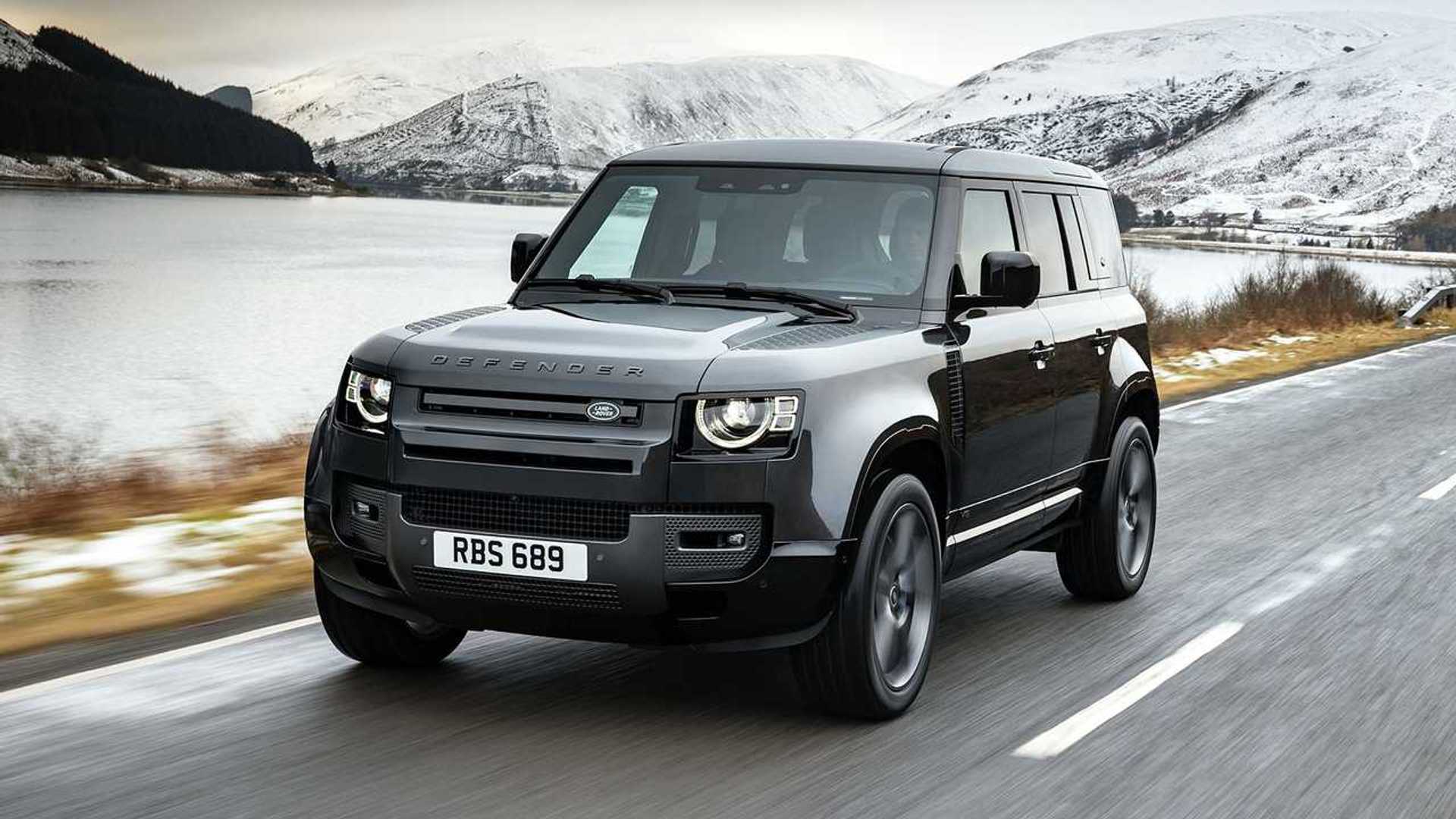
In South Africa, that setting would likely remain on ‘bumpy’ most of the time. Furthermore, when faced with an especially rough stretch of road that feels like one continuous pothole, the Rock Crawl mode proves incredibly useful.
Combined with its rugged chassis, all-wheel drive system, and pothole alert technology, the Land Rover Defender is not here to play.
BYD Yangwang U9
We recently welcomed BYD’s Shark 6, Sealion 6, and Sealion 7 hybrid models. Each of these performs exceptionally well on our pothole-ridden roads, thanks to their advanced suspension systems and thick-walled tyres. However, what we truly crave now is BYD’s Yangwang U9.
Featuring the DiSus-X suspension system which merges Intelligent Damping with Hydraulic Body Control it has the ability to literally jump over obstacles like potholes. This cutting-edge suspension setup also enables the vehicle to adjust its ground clearance while maintaining stability at speeds of up to 120km/h.
BYD’s high-end sub-brand, YANGWANG, has officially unveiled its first pure electric supercar, the U9, priced at 1.68 million RMB. Deliveries of the U9 are scheduled to begin this summer.
This marks a significant milestone for BYD, the world’s leading manufacturer of new energy vehicles and power batteries, as it pushes the boundaries of electric performance vehicles with a model designed to revolutionize the supercar segment.
The YANGWANG U9 adopts the brand’s distinctive “Time Gate” design language, which sets it apart with bold proportions, dramatic tension, and muscular styling.
This design approach underscores the U9’s identity as a next-generation pure electric supercar, blending aesthetics with functionality for a truly head-turning presence on the road.
At the heart of the U9 are two breakthrough technologies: the e4 platform and the DiSus-X Intelligent Body Control System. Together, they transform the U9 into a machine equally capable on the track, on the streets, and even in playful driving scenarios.
The e4 platform features a powertrain based on four independent electric motors, allowing for precise four-wheel independent torque control.
This architecture ensures a remarkable level of safety, responsiveness, and performance. Delivering an astonishing 1,300 horsepower and a peak torque of 1680N·m, the U9 positions itself as a serious contender in the world of electric performance.
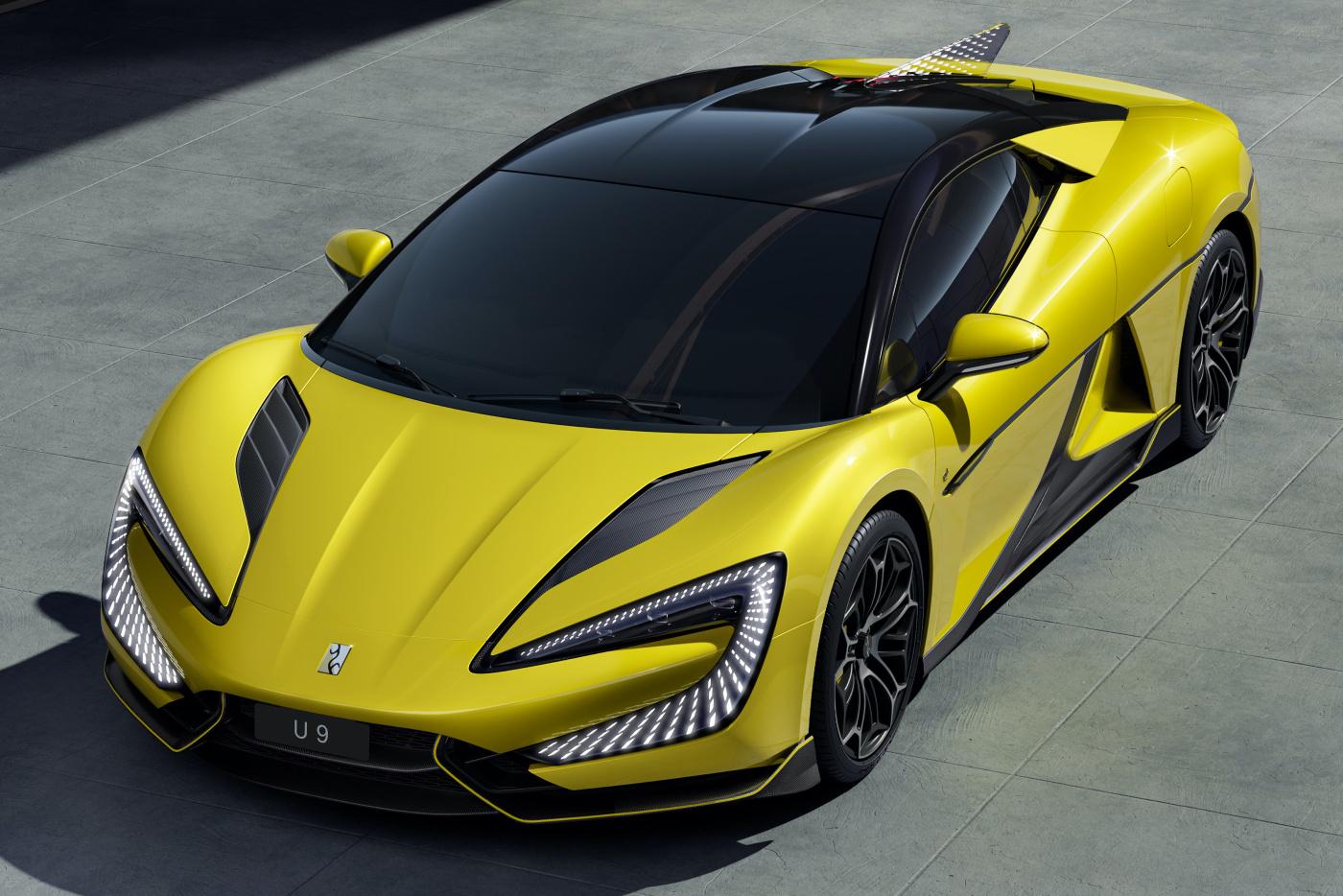
The BYD DiSus-X Intelligent Body Control System is another proprietary advancement that enables the U9 to excel in diverse conditions. This system provides up to 75mm of adjustable suspension travel and a peak single-axis lifting speed of 500mm/s, generating instantaneous lifting forces of over 1 ton.
This capability allows the U9 to “leap” and adapt dynamically to various driving situations, including acceleration, braking, cornering, and road irregularities, all while maximizing comfort and stability for both the driver and passengers.
Notably, the U9 can also perform synchronized movements to music with the push of a button, adding an element of entertainment and showmanship.
Performance figures of the YANGWANG U9 further reinforce its groundbreaking nature. In recent tests, it achieved a top speed of 309.19 km/h and accelerated from 0 to 100 km/h in just 2.36 seconds.
It also completed the 0–400m sprint in 9.78 seconds. Thanks to extensive track testing, the U9’s thermal management system has been optimized for extreme conditions, now offering double the maximum cooling capacity.
This is supported by the Blade Battery, which enhances both discharge and cooling performance, and a dual plug-in ultra-fast charging system that can deliver up to 500 kW of charging power.
The vehicle also incorporates 12 active and passive aerodynamic components that reduce drag and improve thermal efficiency.
Structurally, the U9 features a Super Carbon-Fiber Cabin, built using a composite of advanced materials and supported by next-generation Cell-to-Body (CTB) technology.
This construction results in a torsional stiffness of 54,425 N·m/deg and a roof capable of withstanding over 11 tons of compressive force on a single side, underscoring YANGWANG’s commitment to both high performance and uncompromising safety.
Also Read: 10 Affordable Suspension Upgrades for Smoother Rides
Cars with the Worst Suspension Systems
Your vehicle’s suspension system is a crucial component when it comes to overall safety. It also significantly affects how comfortable the ride feels and how well the car handles.
Unfortunately, some vehicles on the market have gained a reputation for having truly terrible suspensions.
If you’re thinking about purchasing any of the following five cars, you may want to think twice or at the very least, take the time to understand the common suspension-related complaints associated with them.
Jeep Wrangler
I generally would never recommend purchasing a Jeep. Although the Wrangler is celebrated for its off-road capabilities, a significant number of owners have reported suspension troubles.
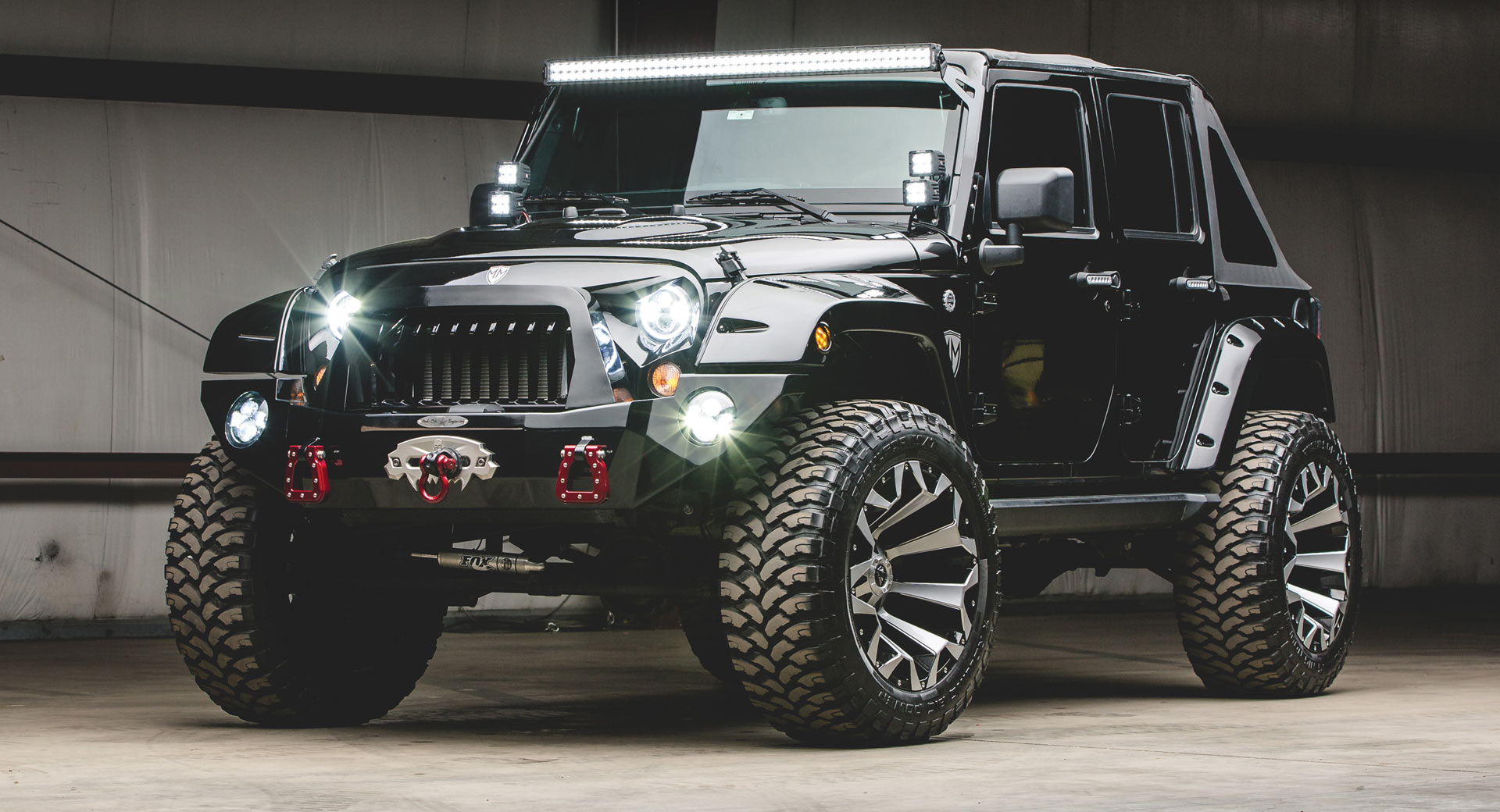
The solid-axle setup leaves the ride harsh and uncomfortable on ordinary pavement. Additional grievances include bump steer, pronounced body roll, and a pervasive, jittery feel behind the wheel.
Venture onto the highway and be prepared for the entire vehicle to shake a phenomenon Jeep drivers commonly label the “death wobble.” Fixing the problem can be expensive, as new control arms and track bars alone can run well over $1,000.
What the Jeep Wrangler may lack in refined driving dynamics, it more than makes up for with its unmatched variety and customization options.
Whether you want two doors or four, a hardtop or a soft top, or a choice between a V-6, turbocharged four-cylinder, muscular V-8, or plug-in hybrid powertrain, the Wrangler lineup offers a mix-and-match approach unlike any other.
While alternatives like the Ford Bronco and Toyota 4Runner deliver more on-road comfort and polish, they can’t quite replicate the raw appeal that draws buyers to the Wrangler. It’s the iconic off-road reputation—honed over decades since its origin in World War II—that continues to captivate.
Though it’s come a long way by integrating features like power windows, air conditioning, and modern infotainment systems, it still holds true to the design, character, and utility that made it legendary. That said, prospective owners must be willing to accept vague steering, a bumpy ride, and a tight cabin, especially if it’s going to serve as a daily driver.
Currently, the Jeep Wrangler ranks 11th among Best Mid-Size 2-Row SUVs, behind models like the Ford Bronco, Toyota Land Cruiser, Bronco Raptor, 4Runner, and Toyota Crown Signia.
With a starting price of $34,090, it offers an accessible entry into the world of rugged, off-road-ready vehicles. Jeep had initially planned to limit V-6 Wranglers to a manual transmission only, leaving the eight-speed automatic to other configurations.
However, consumer pushback led the company to reintroduce automatic-equipped V-6 models. While the standard Rubicon 392 V-8 model has been phased out, the Rubicon 392 Final Edition will continue for at least another year.
For 2025, all Wrangler trims now come standard with power windows and locks—a notable update, considering that these features were previously unavailable on base models. Also new is an olive-drab exterior color dubbed ’41, a direct nod to the original WWII Jeep heritage.
For buyers interested in maintaining the Wrangler’s rugged essence without overspending, the base two-door variant with a removable cloth top is a good place to start.
To add functionality without going full bare-bones, the Willys trim is a smart upgrade. It includes features like 17-inch wheels wrapped in 33-inch all-terrain tires, a locking rear differential, LED exterior lighting, and auxiliary switches pre-installed for winches or light bars.
For the powertrain, the 270-hp turbocharged 2.0-liter four-cylinder is worth considering. It delivers 295 pound-feet of torque—35 more than the standard V-6—and comes paired with an eight-speed automatic transmission for smooth, low-stress off-road driving.
Under the hood, the standard 285-hp 3.6-liter V-6 engine is available with a six-speed manual or optional eight-speed automatic transmission.
The latter is standard for the four-cylinder, plug-in hybrid, and V-8 variants. The top-tier Rubicon 392 Final Edition comes with a 470-hp, 6.4-liter V-8 paired exclusively with the eight-speed automatic.
The 375-hp plug-in hybrid 4xe is reviewed separately, while the turbocharged four-cylinder remains a strong middle ground. Part-time four-wheel drive is standard on most trims, but full-time 4WD is either available or standard depending on the model.
While Jeep has made strides in refining the Wrangler’s on-road behavior, its handling still feels old-school and truck-like when compared with modern SUVs. The ride is relatively smooth in the longer-wheelbase four-door variant, whereas the shorter two-door tends to bounce more aggressively over uneven surfaces.
Performance testing reflects these dynamics. A base two-door Wrangler Sport equipped with the V-6 and manual gearbox accelerated from 0 to 60 mph in 6.1 seconds. A four-door Sahara with the turbocharged four-cylinder achieved the same in 6.5 seconds.
The Rubicon, due to its added weight and off-road hardware, took 7.1 seconds. Meanwhile, the high-performance Rubicon 392 rocketed to 60 mph in just 4.0 seconds—delivering thrilling performance that feels even more intense due to the Wrangler’s loose steering.
Fuel economy is another area where the Wrangler can surprise. While it sits in a generally gas-thirsty segment, it still performs well against rivals. The turbo-four returned an impressive 26 mpg on a 75-mph highway fuel economy test, which is 2 mpg above its EPA estimate.
The Rubicon 392, on the other hand, managed only 13 mpg in the same test. For more detailed fuel economy figures, the EPA’s website offers additional information.
Inside, the Wrangler’s cabin merges classic Jeep styling with enough modern convenience to feel current. The tall, upright seating position provides excellent forward visibility, which is ideal for maneuvering on narrow trails.
However, thick roof pillars and grab handles obstruct rearward views—an issue easily resolved by removing the doors and top for a more open feel.
The interior design features a squared-off dashboard, round air vents, and tactile switches for climate control, windows, and media. While it’s capable enough as a day-to-day utility vehicle, its practicality has limits.
The rear seats do not fold flat with the cargo floor, unlike many competing SUVs. The two-door model especially sacrifices cargo space, fitting only two carry-on bags behind the rear seats. In contrast, the four-door Unlimited model can fit up to ten, which makes it a more versatile choice for group trips or longer excursions.
GMC SUVs and Trucks
GMC trucks and SUVs, including models like the Yukon and Sierra, are designed with power in mind, but their suspension systems often leave much to be desired.
Many of these vehicles are outfitted with GM’s Magnetic Ride Control, which provides a smooth ride when functioning properly but can be very expensive to repair when it fails.
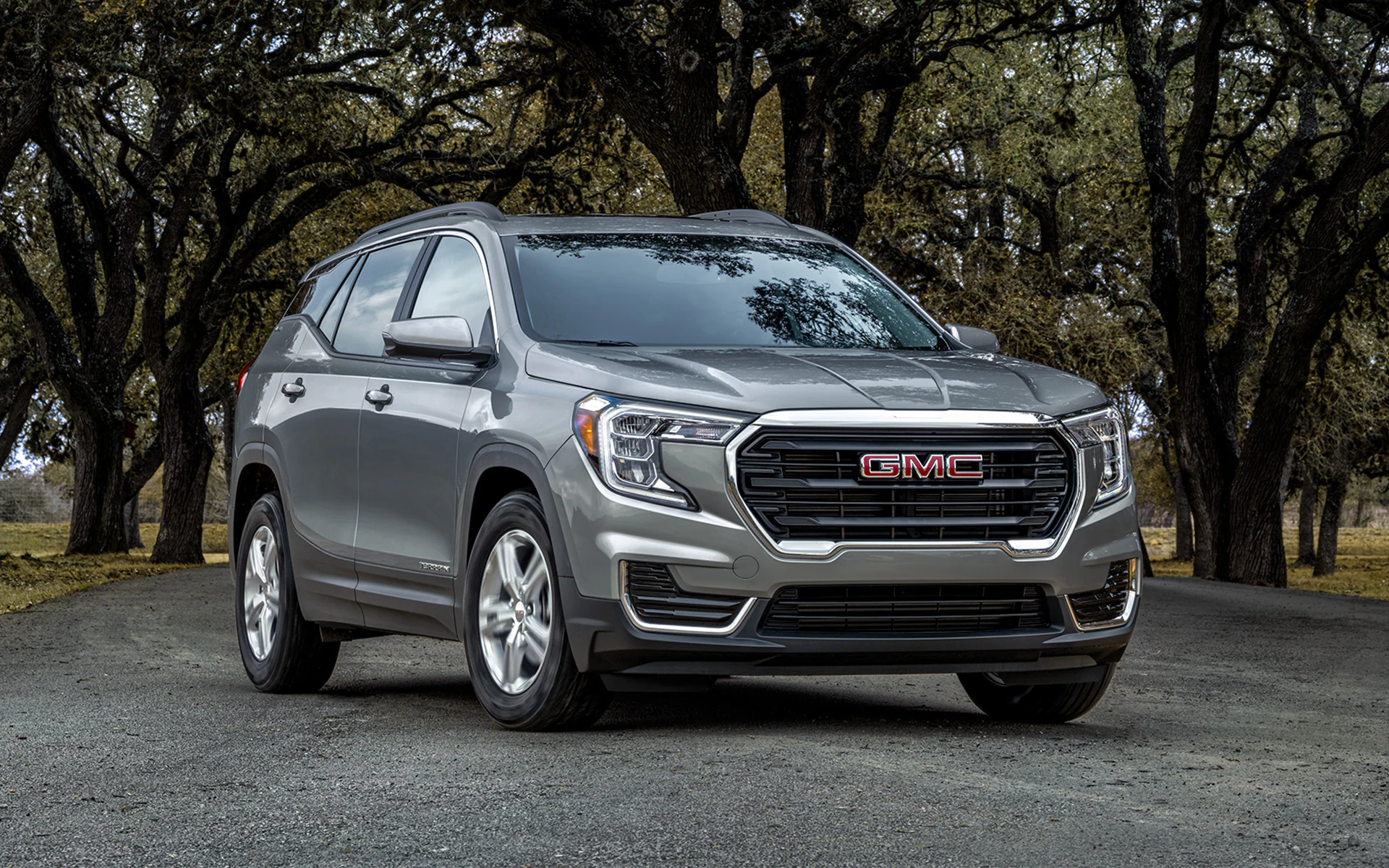
Air suspension components are also known to leak or malfunction, resulting in a sagging stance and diminished ride comfort.
Owners have reported that replacing air shocks and compressors can range in cost from $1,500 to $3,000.
Ford Ranger 4×4
The Ford Ranger 4×4 is a tough and reliable pickup, but its suspension system isn’t ideal for smooth urban driving.
Its leaf-spring rear suspension creates an especially stiff ride, particularly when the truck bed is empty.
Numerous owners have reported excessive bouncing and a jarring experience on uneven surfaces.
The front suspension parts such as control arms and bushings also tend to wear out quickly under heavy-duty conditions. Replacing these components can cost more than $1,200, making regular upkeep a pricey affair.
Before the debut of the first Ford Ranger generation in 1982, Ford’s mid-size truck lineup in North America during the 1970s consisted of rebadged Mazda trucks, sold under the name Courier, thanks to the Ford/Mazda partnership at the time. The first-generation Ranger, covering model years 1983 through 1992, marked Ford’s first domestically developed mid-size pickup and laid the foundation for the model’s future.
This initial generation was followed by a second-generation Ranger that retained a largely unchanged frame but featured updated, more aerodynamic and contemporary styling. Just five years later, in 1998, Ford introduced the third generation of the Ranger.
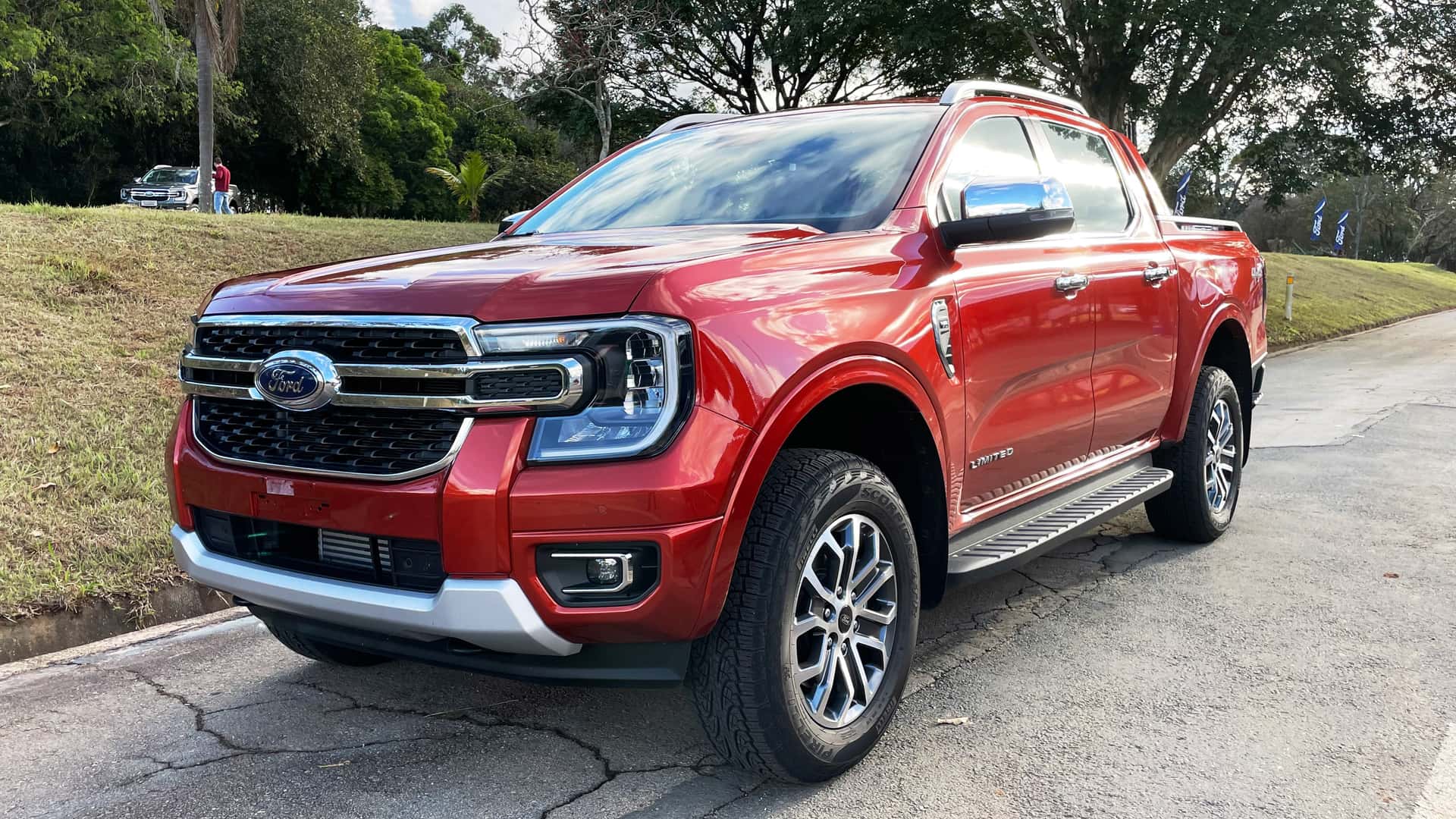
This version remained in production for 14 years and underwent three different facelifts over its long lifecycle. After being discontinued in the U.S. for eight years, the Ranger returned in 2019, now based on the globally sold T6 platform that had already been available in overseas markets for some time.
However, this iteration was only available for four years before Ford introduced the current, fifth-generation Ranger for the 2024 model year, built on an evolved version of the T6 architecture.
The 2024 Ford Ranger does not represent a complete ground-up redesign but is instead built on an updated version of the T6 chassis. It continues to offer the familiar 270-hp 2.3-liter turbocharged four-cylinder engine paired with a 10-speed automatic transmission.
However, the new model also adds a more powerful 2.7-liter twin-turbo V6 producing 310 horsepower, using the same 10-speed automatic transmission.
Nissan Note/Versa
The Nissan Note, known as the Versa in the U.S., is an affordable compact car, but its suspension system leaves a lot to be desired.
The rear torsion beam setup offers minimal shock absorption, resulting in a noticeably bumpy ride. Many owners have reported excessive body roll during cornering and poor stability when driving on highways.
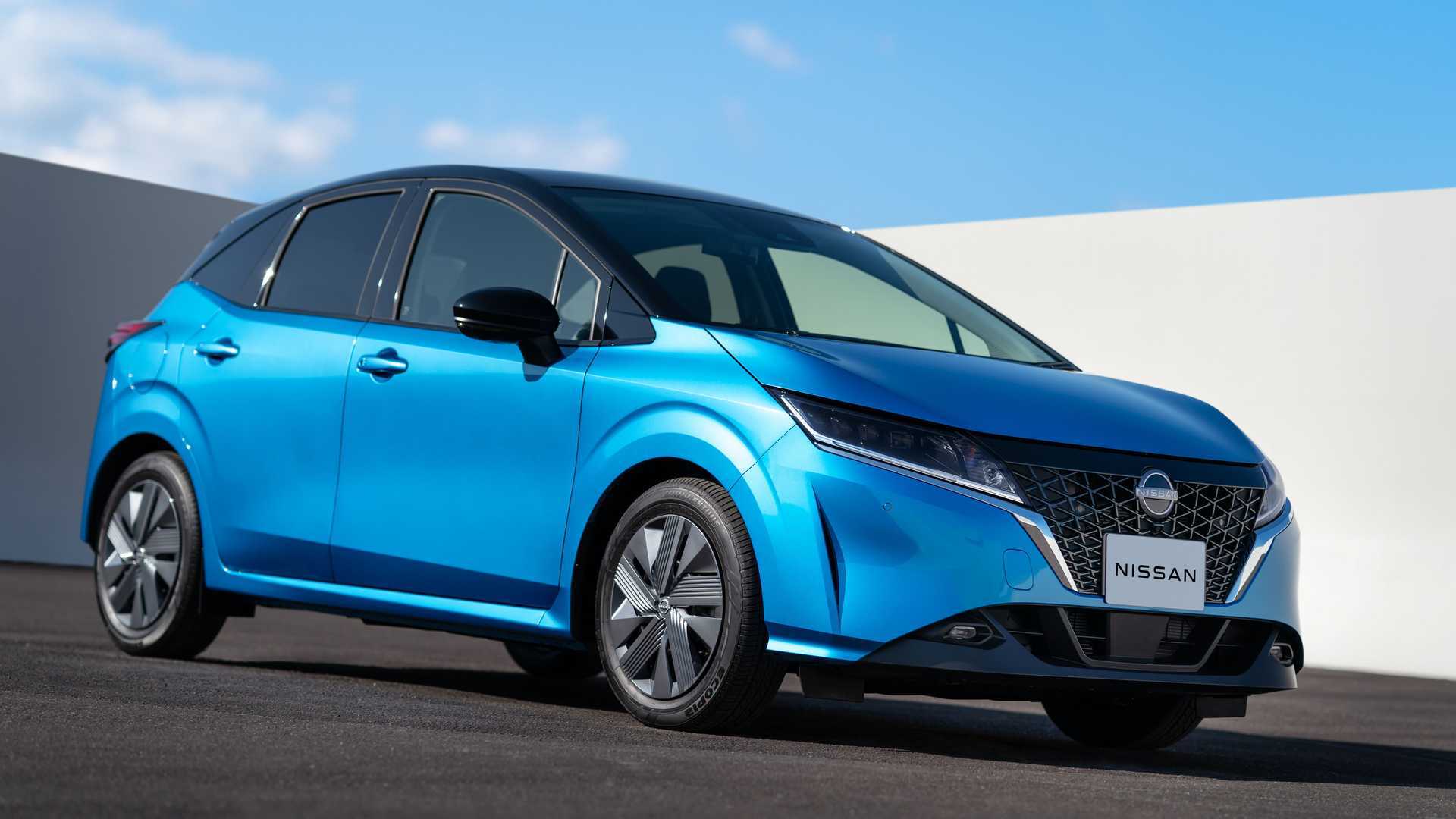
Suspension parts such as struts and control arms tend to wear out quickly, leading to frequent replacements.
While repairing suspension issues on the Versa may not seem costly initially, recurring problems can cause expenses to exceed $1,000 over time.
Toyota Hilux
The Toyota Hilux is widely recognized for its reliability, but its suspension system is not among its strengths. Built mainly for off-road and heavy-duty purposes, the rear leaf-spring setup leads to a very stiff ride.
Drivers frequently report a rough and uncomfortable experience, especially when the truck is empty.
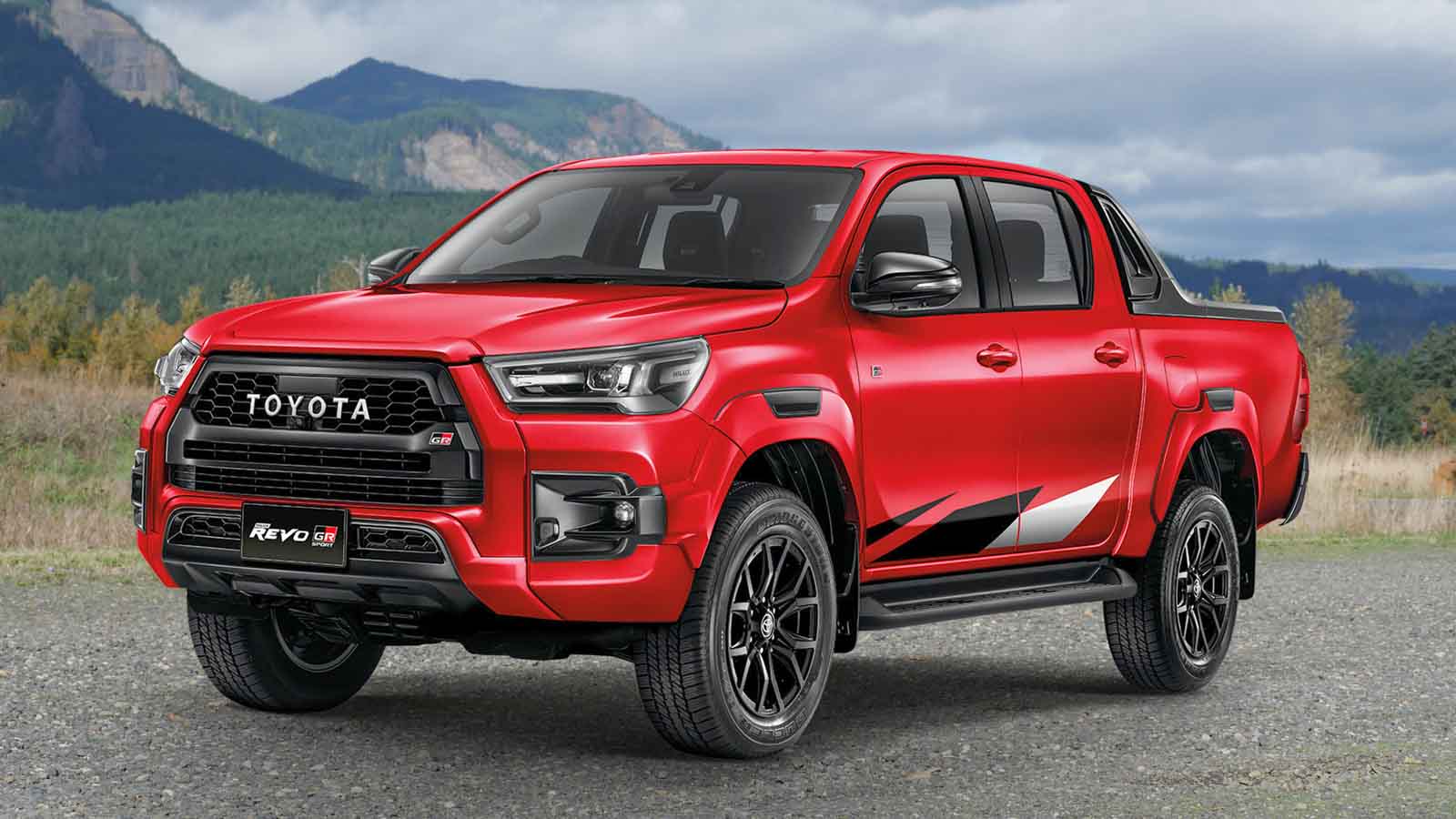
Additionally, the suspension can become noisy over time, developing squeaks and rattles.
Replacing the leaf springs and shock absorbers can cost anywhere between $1,500 and $2,500, making maintenance quite costly.

